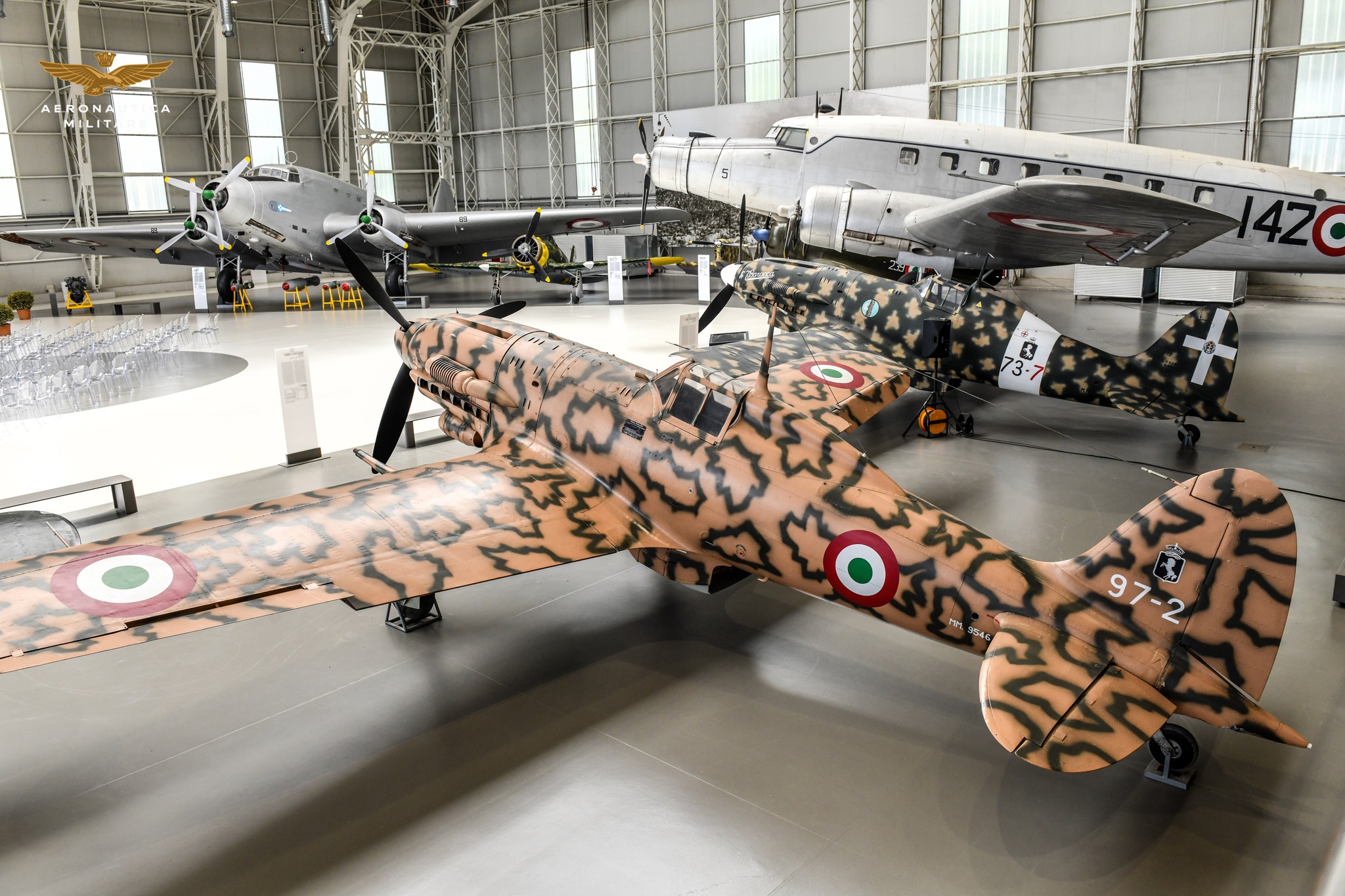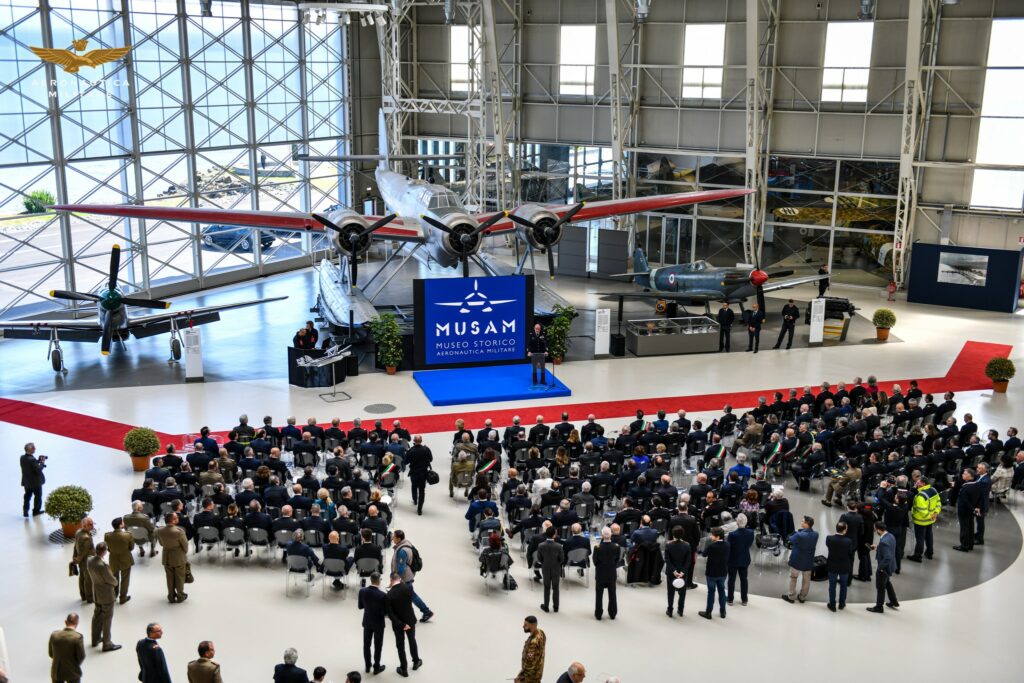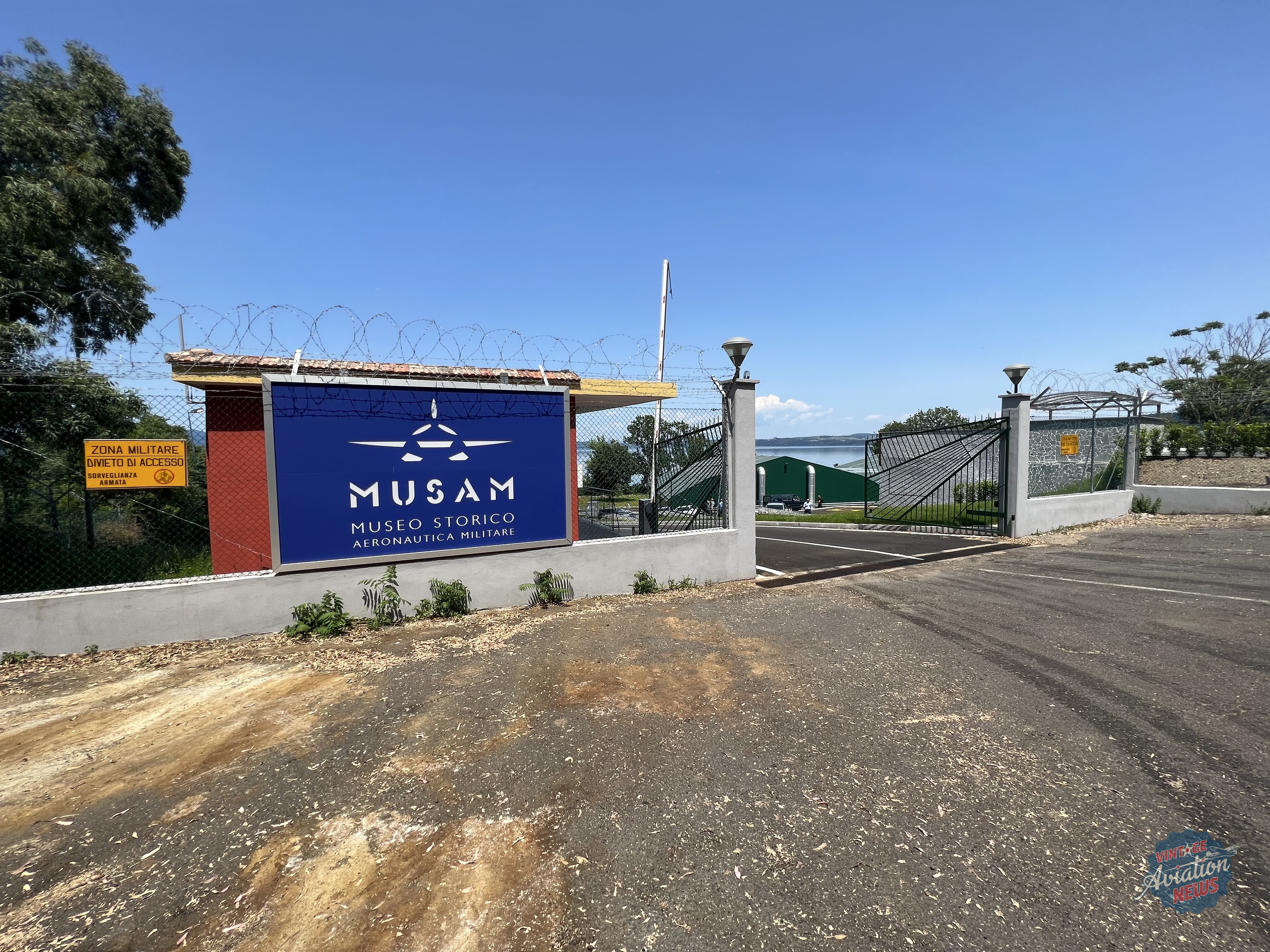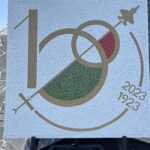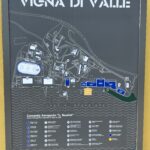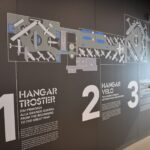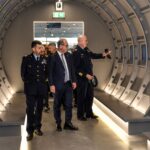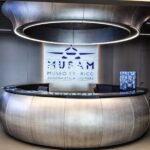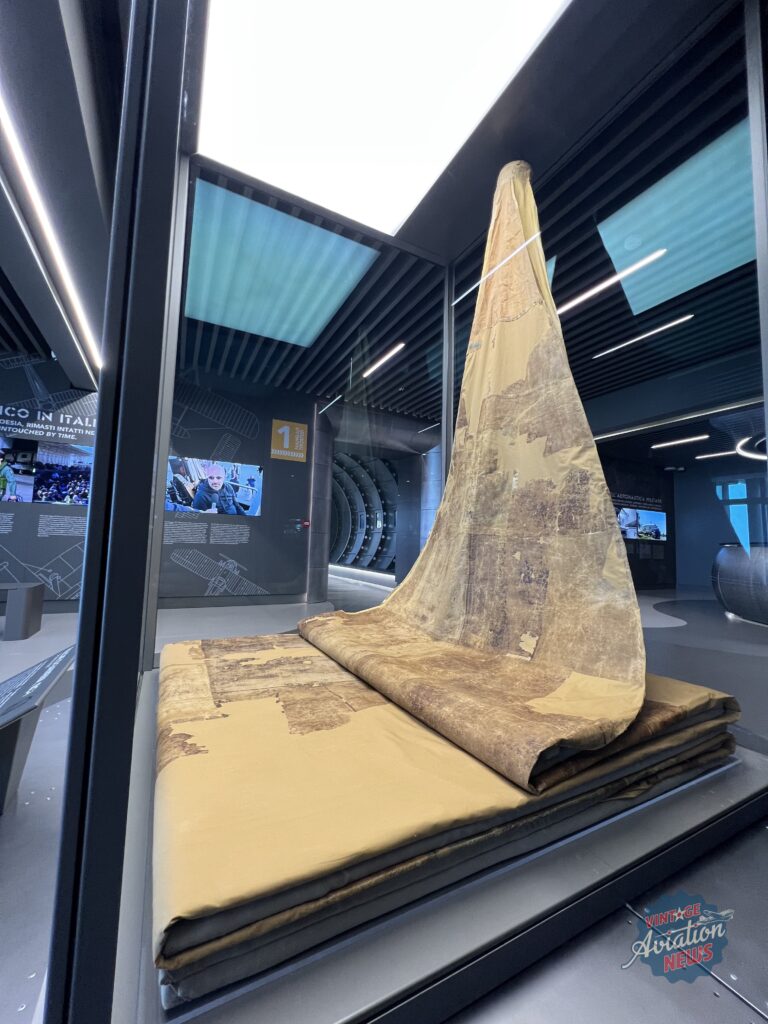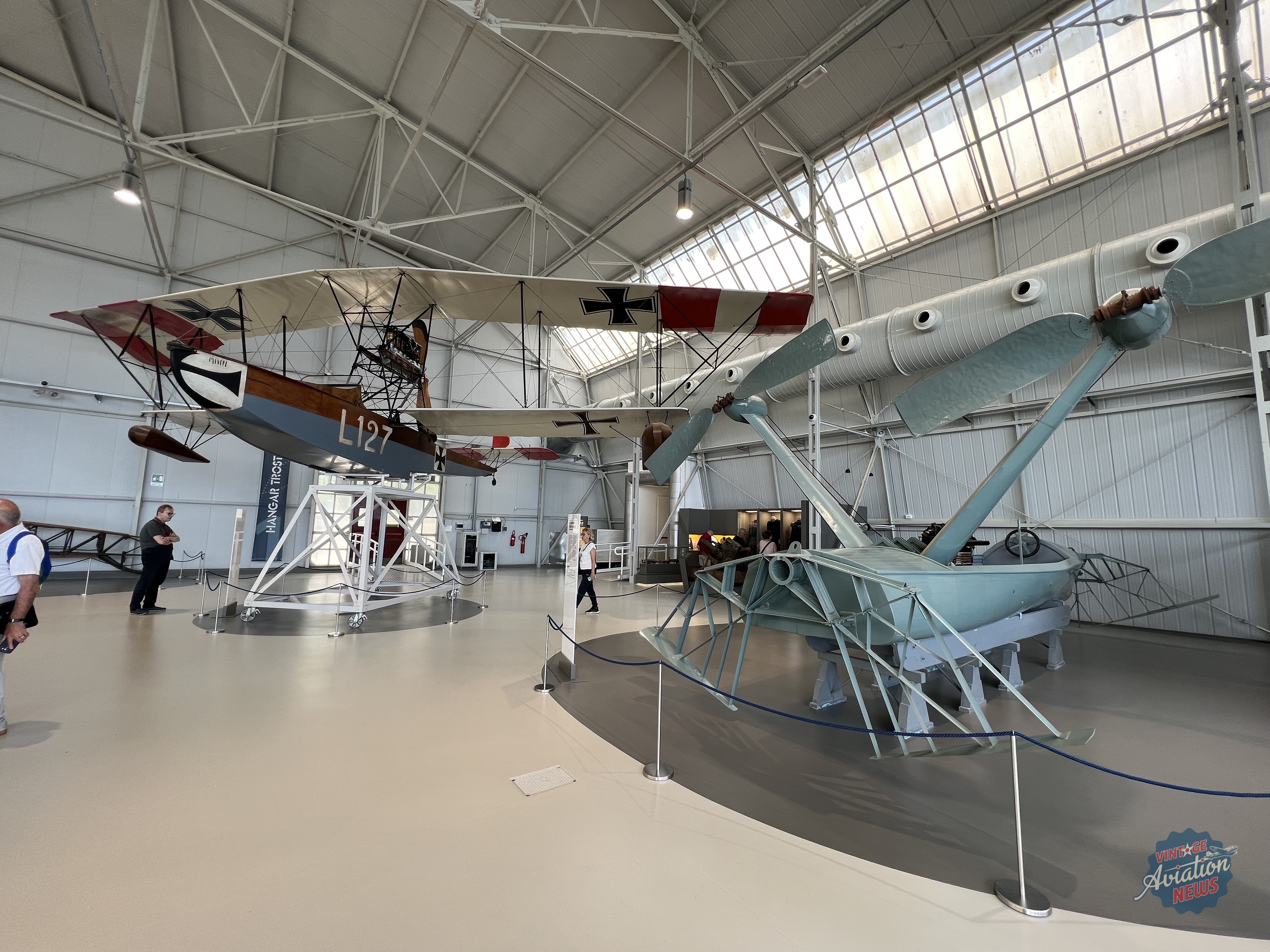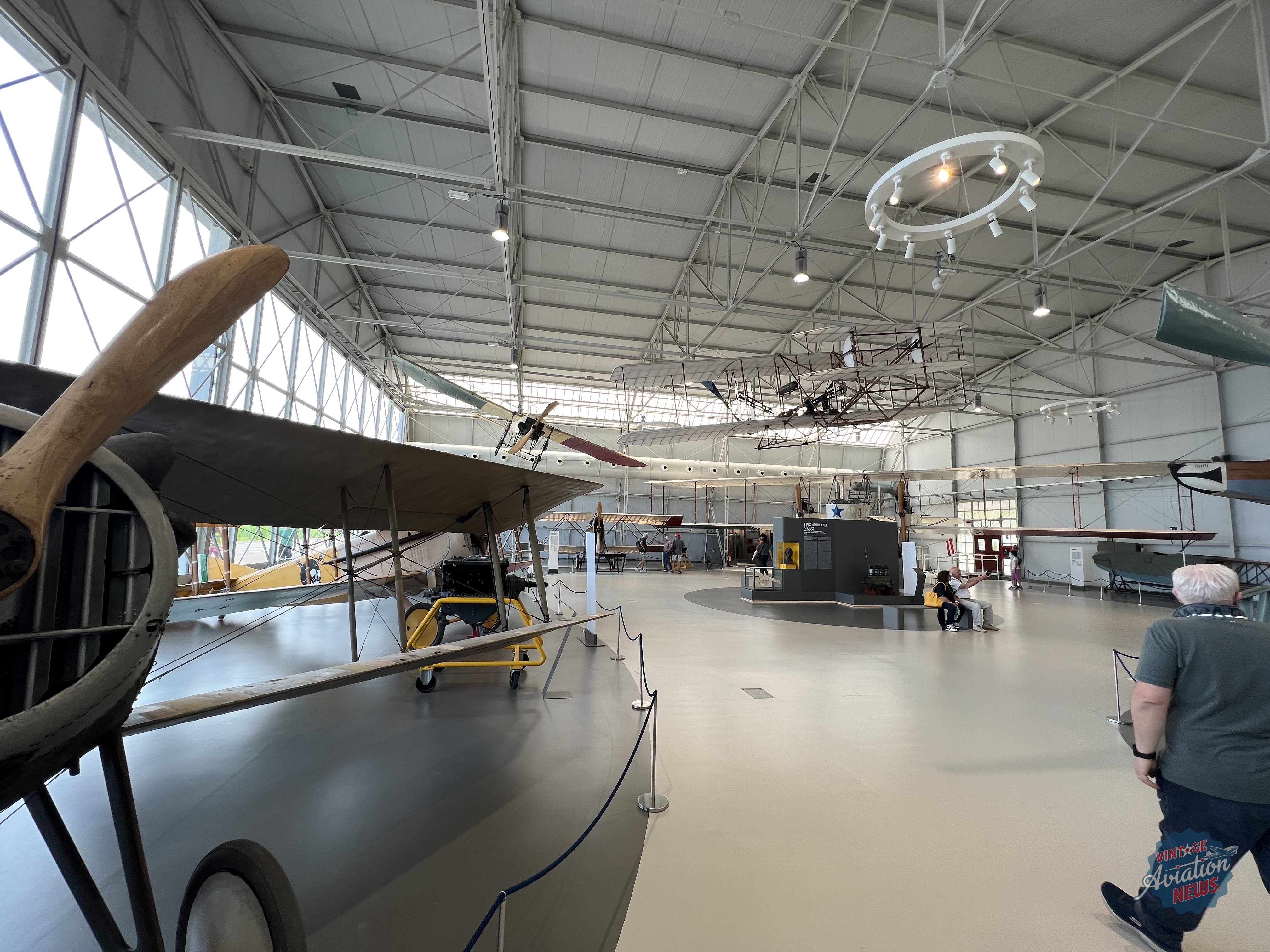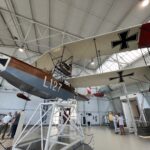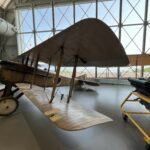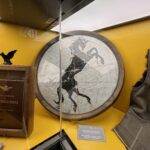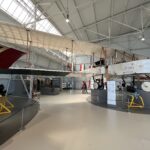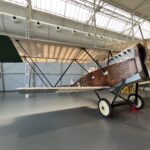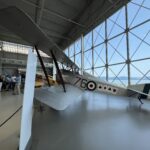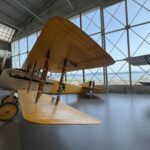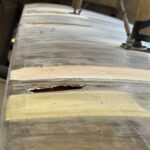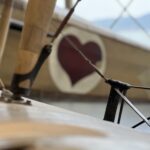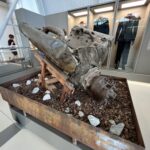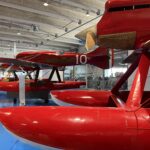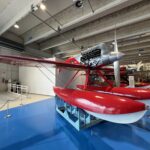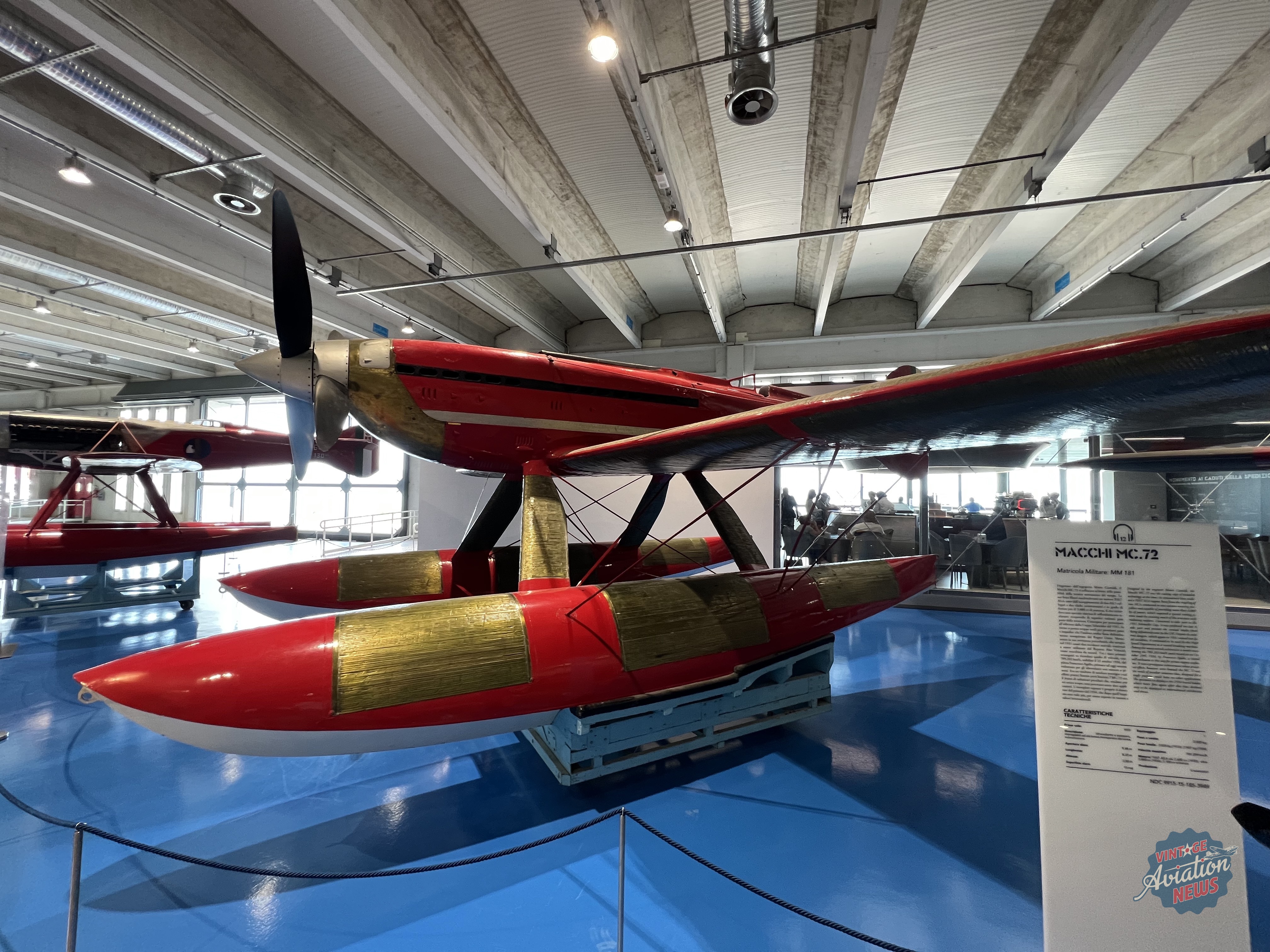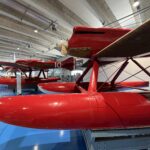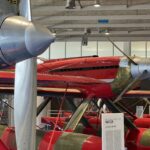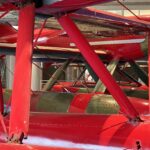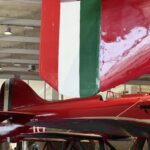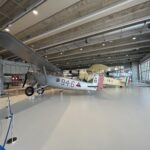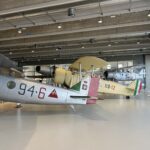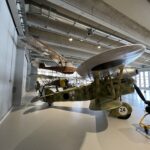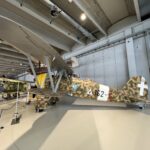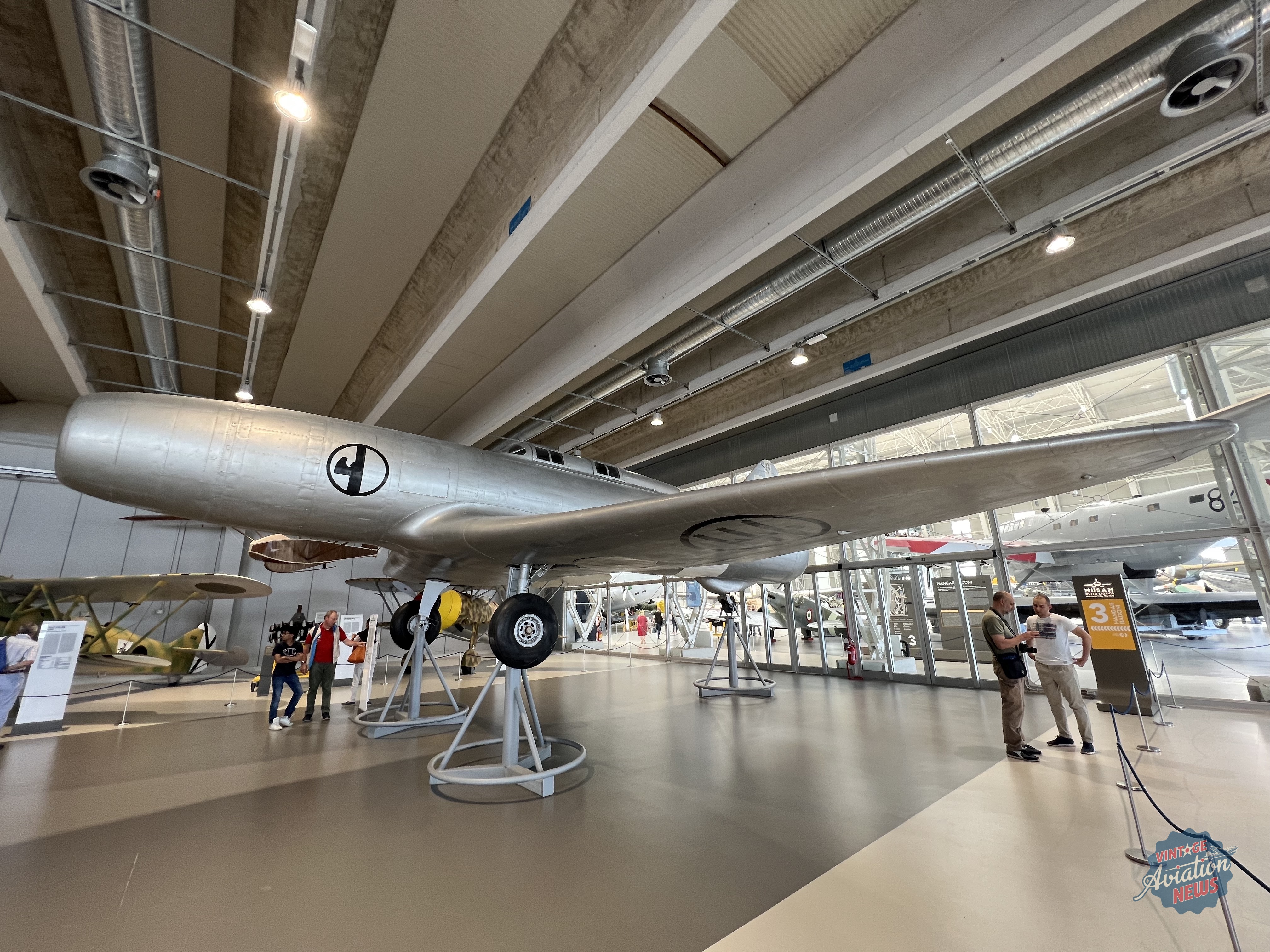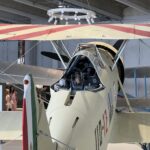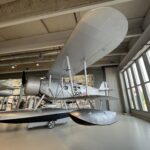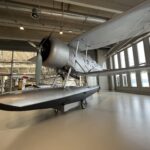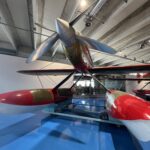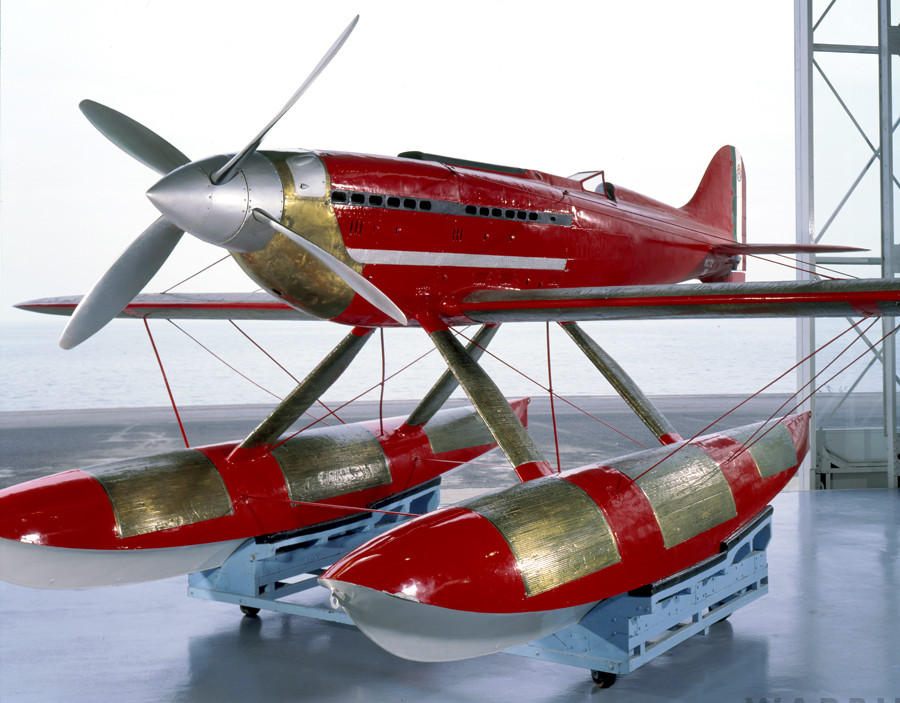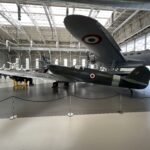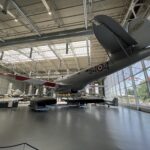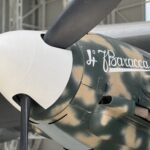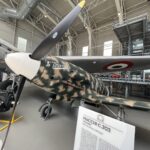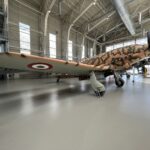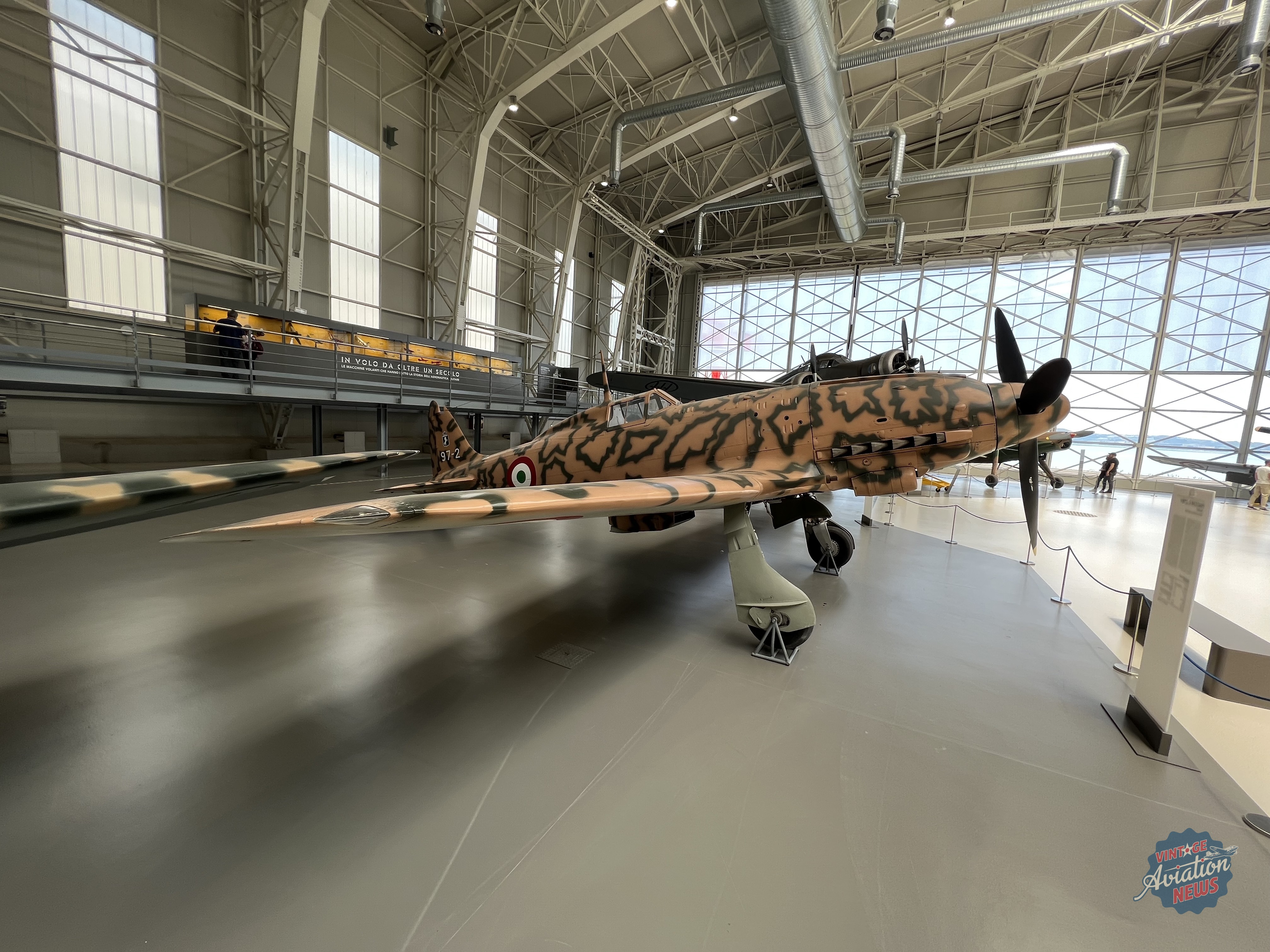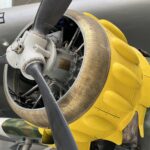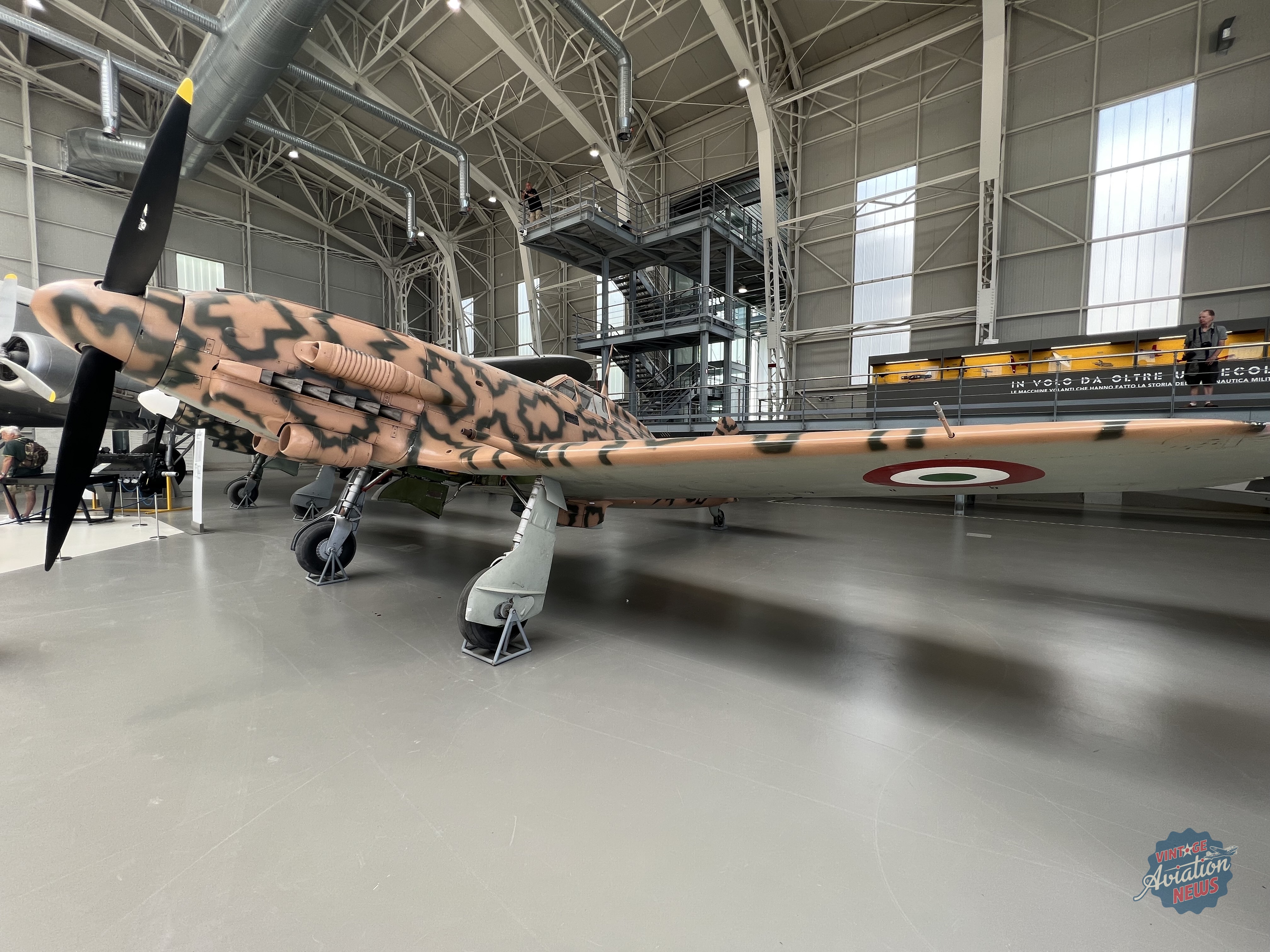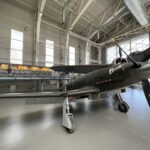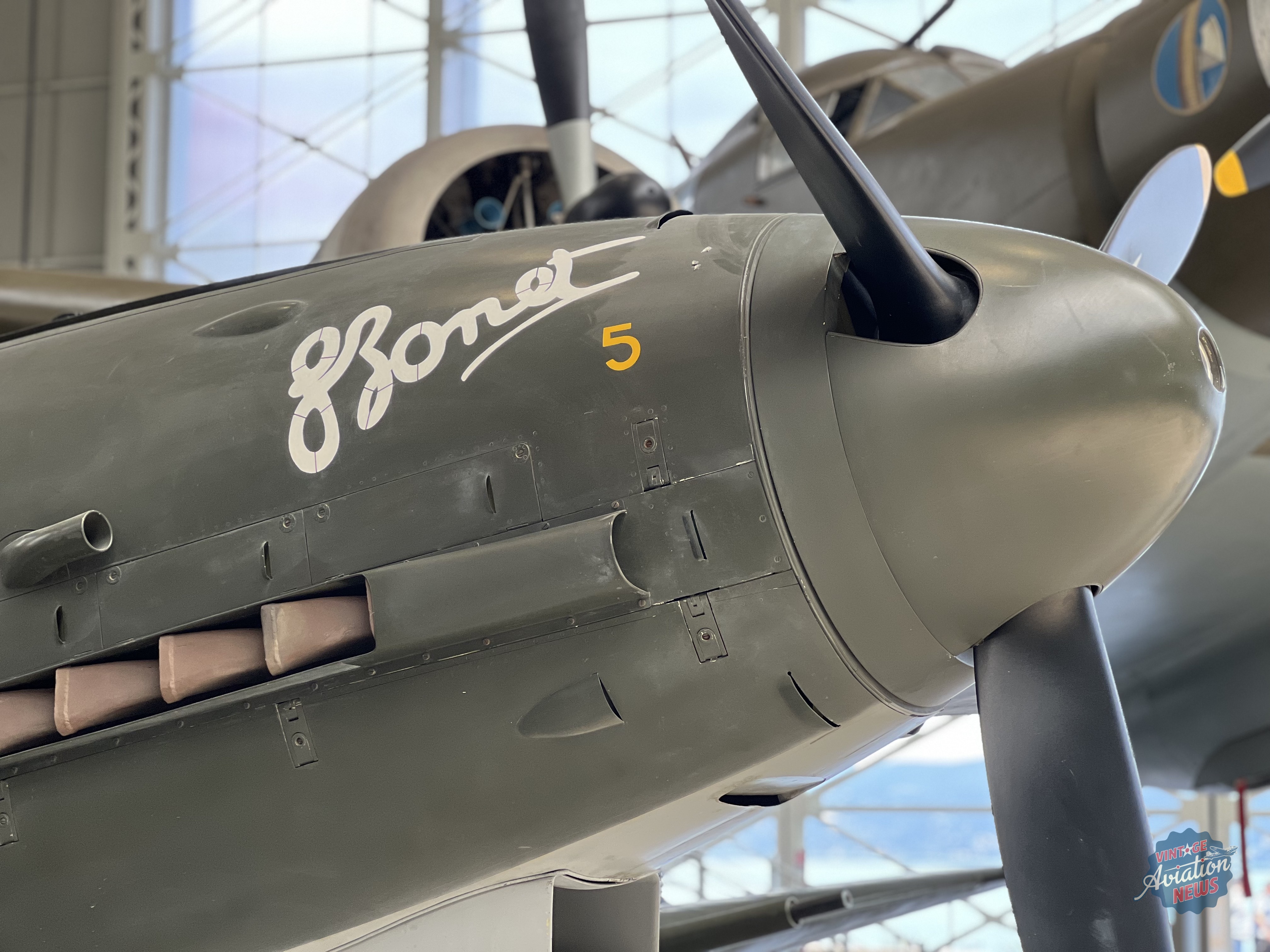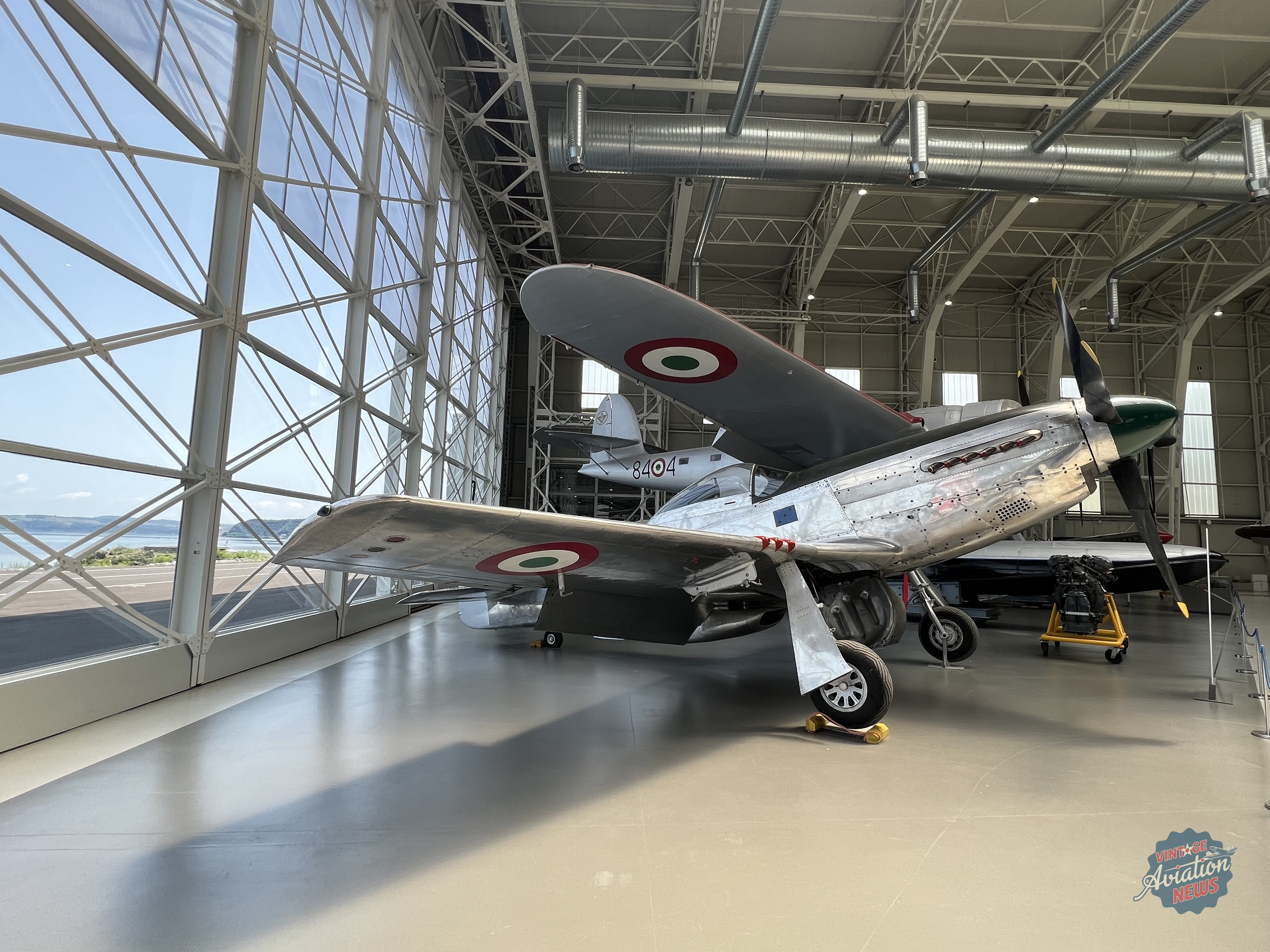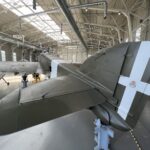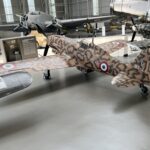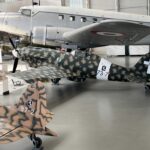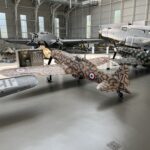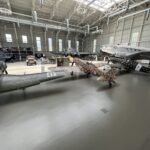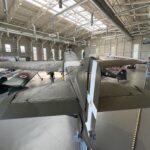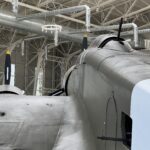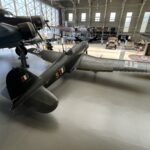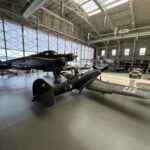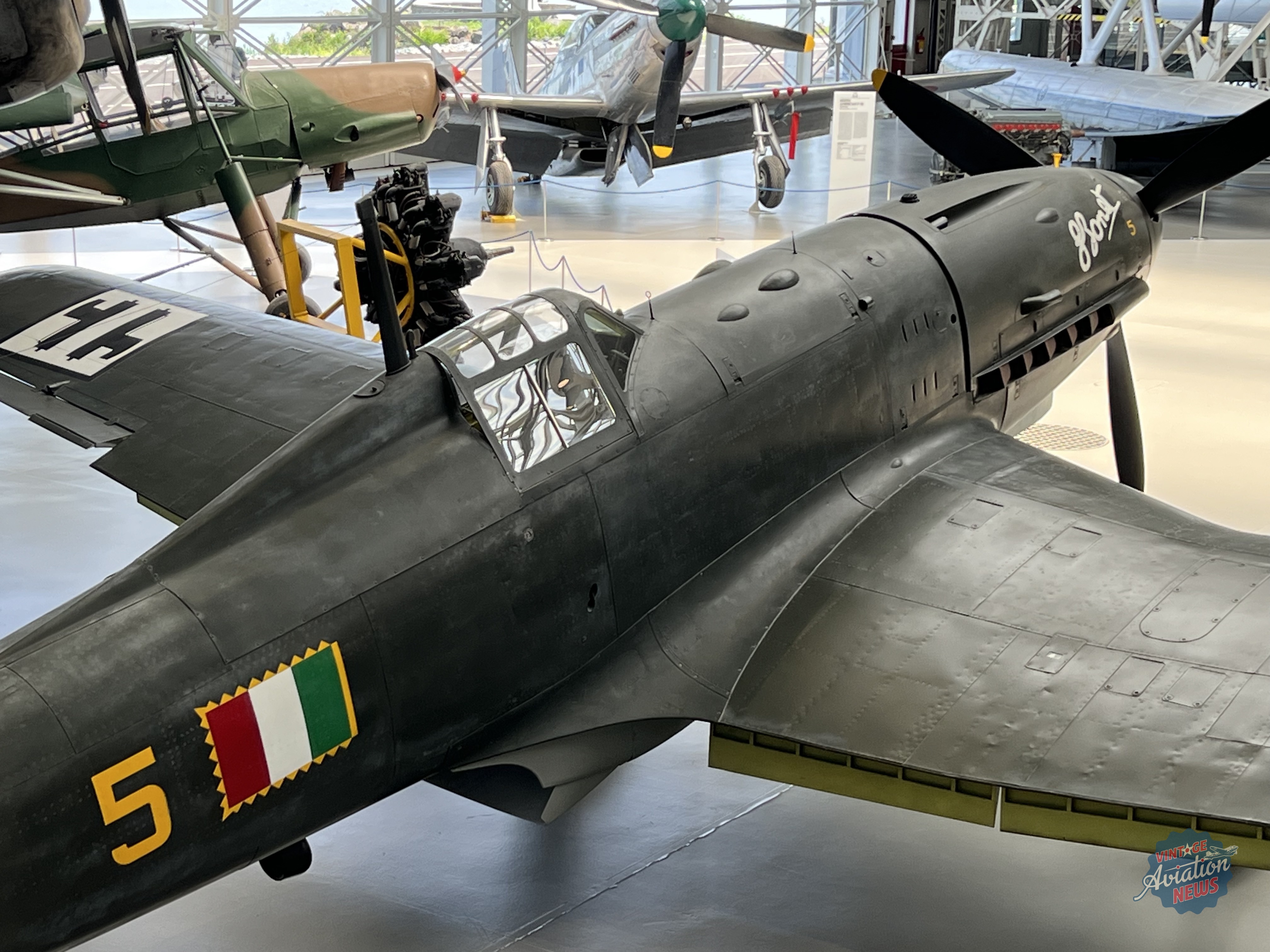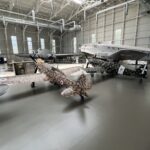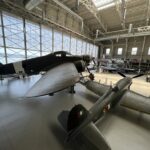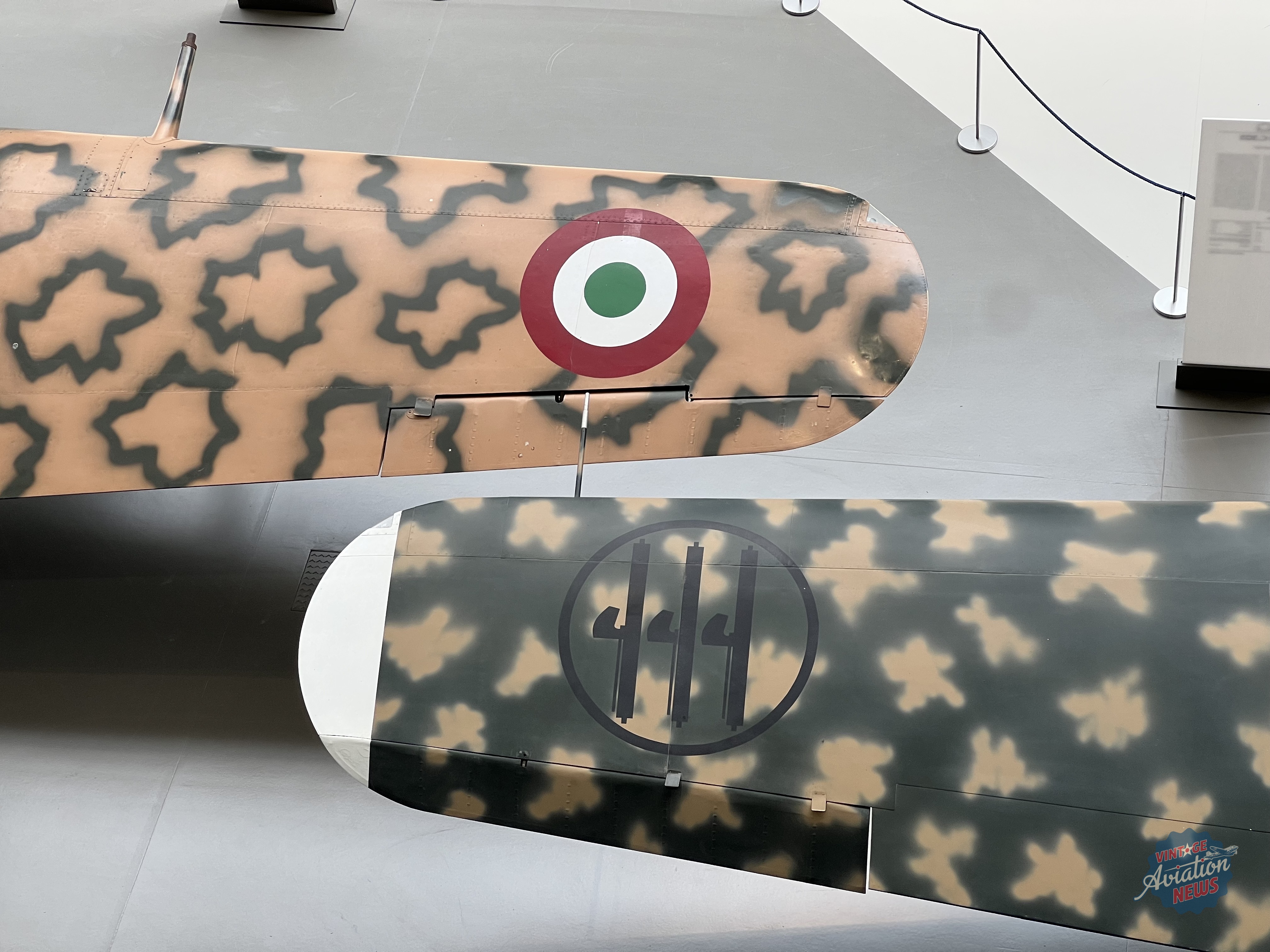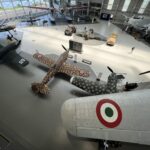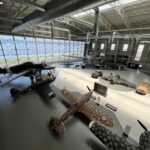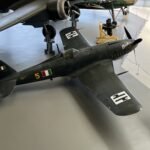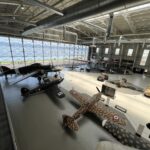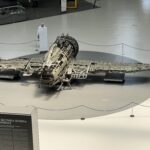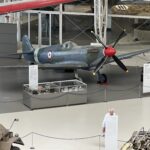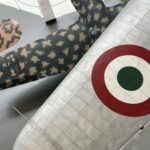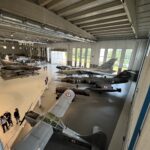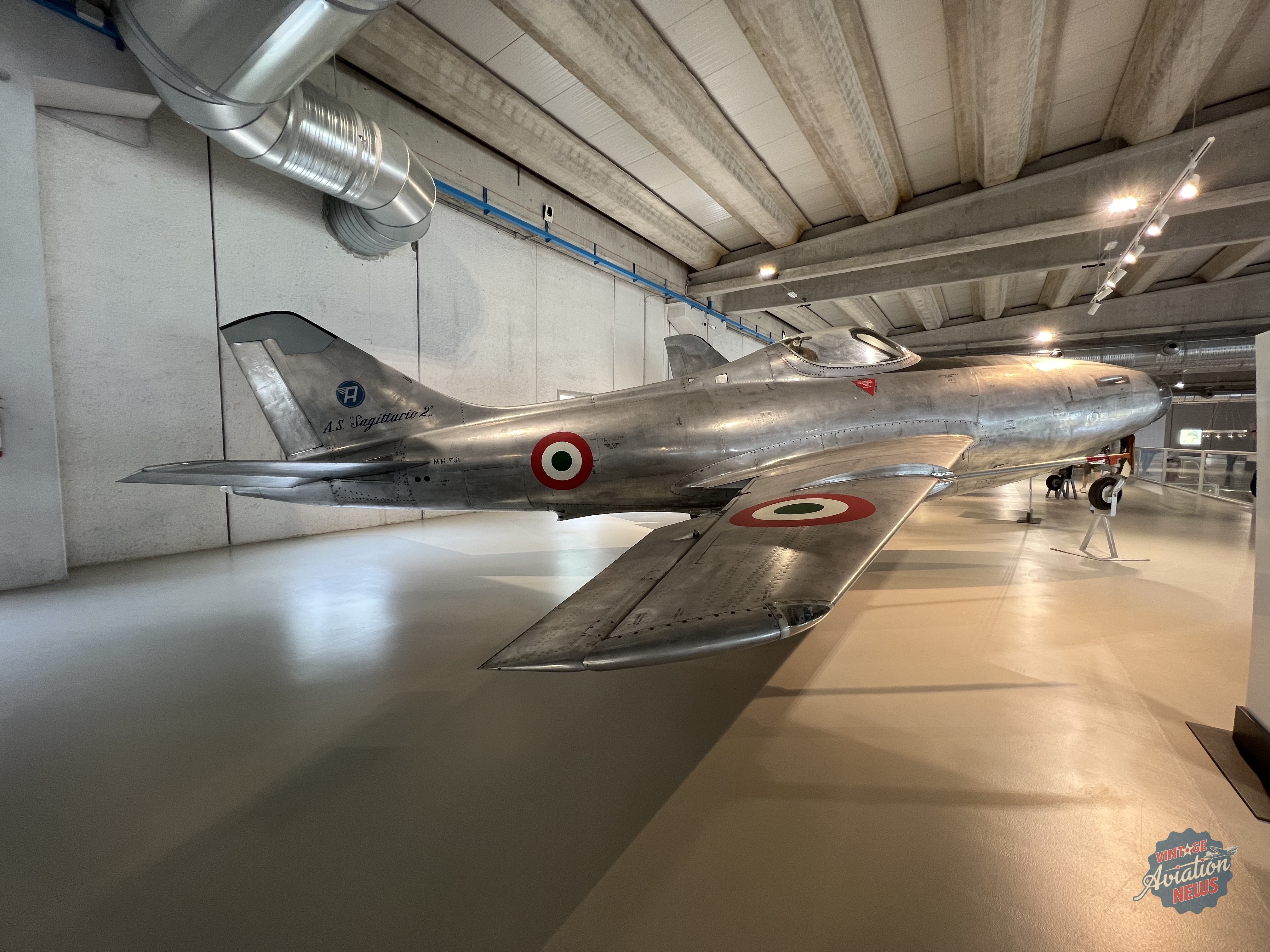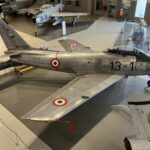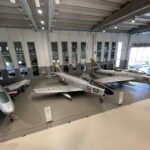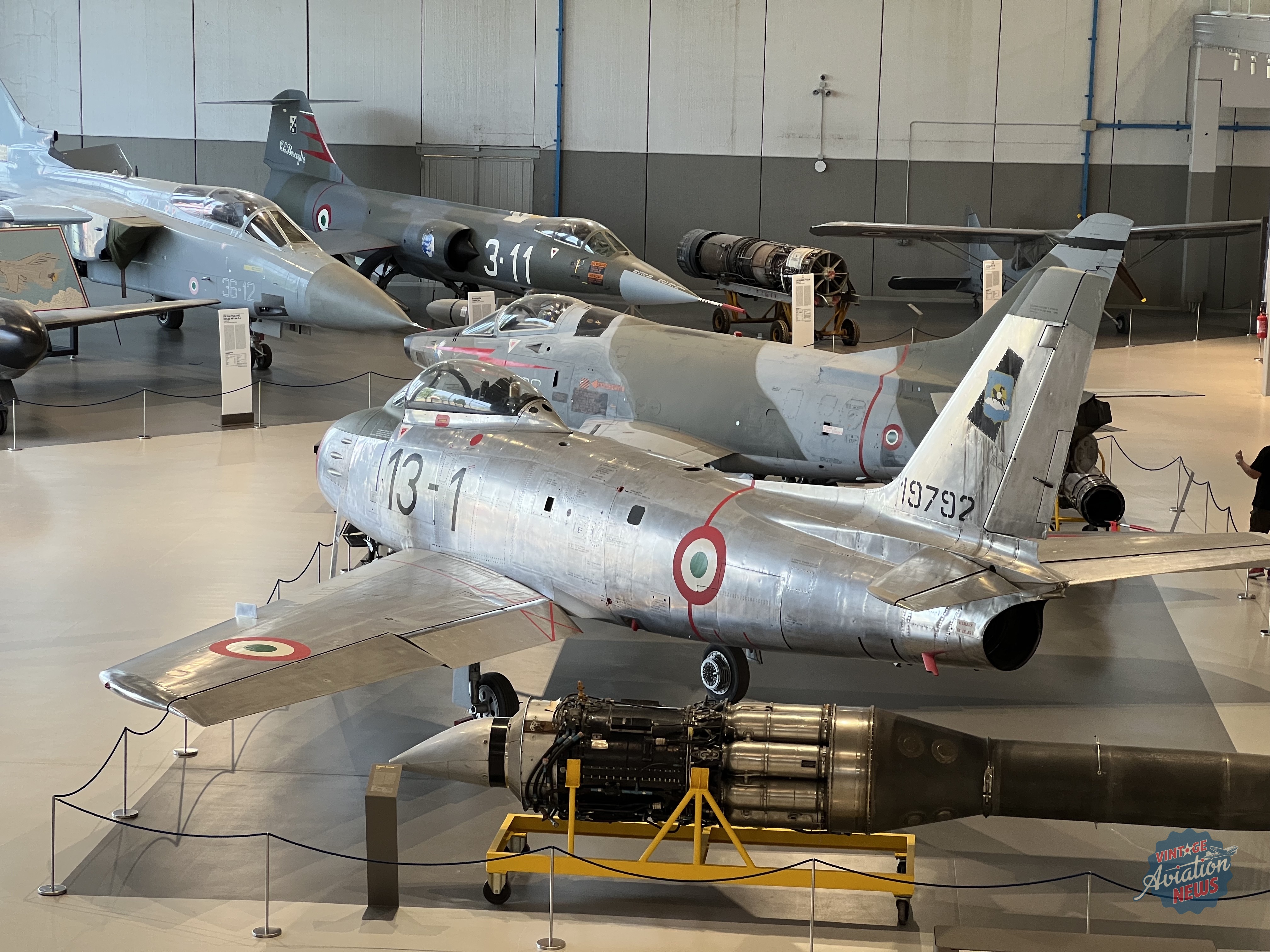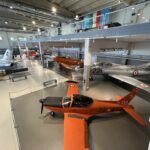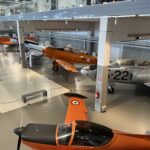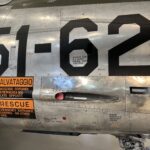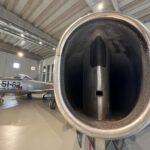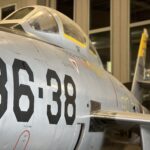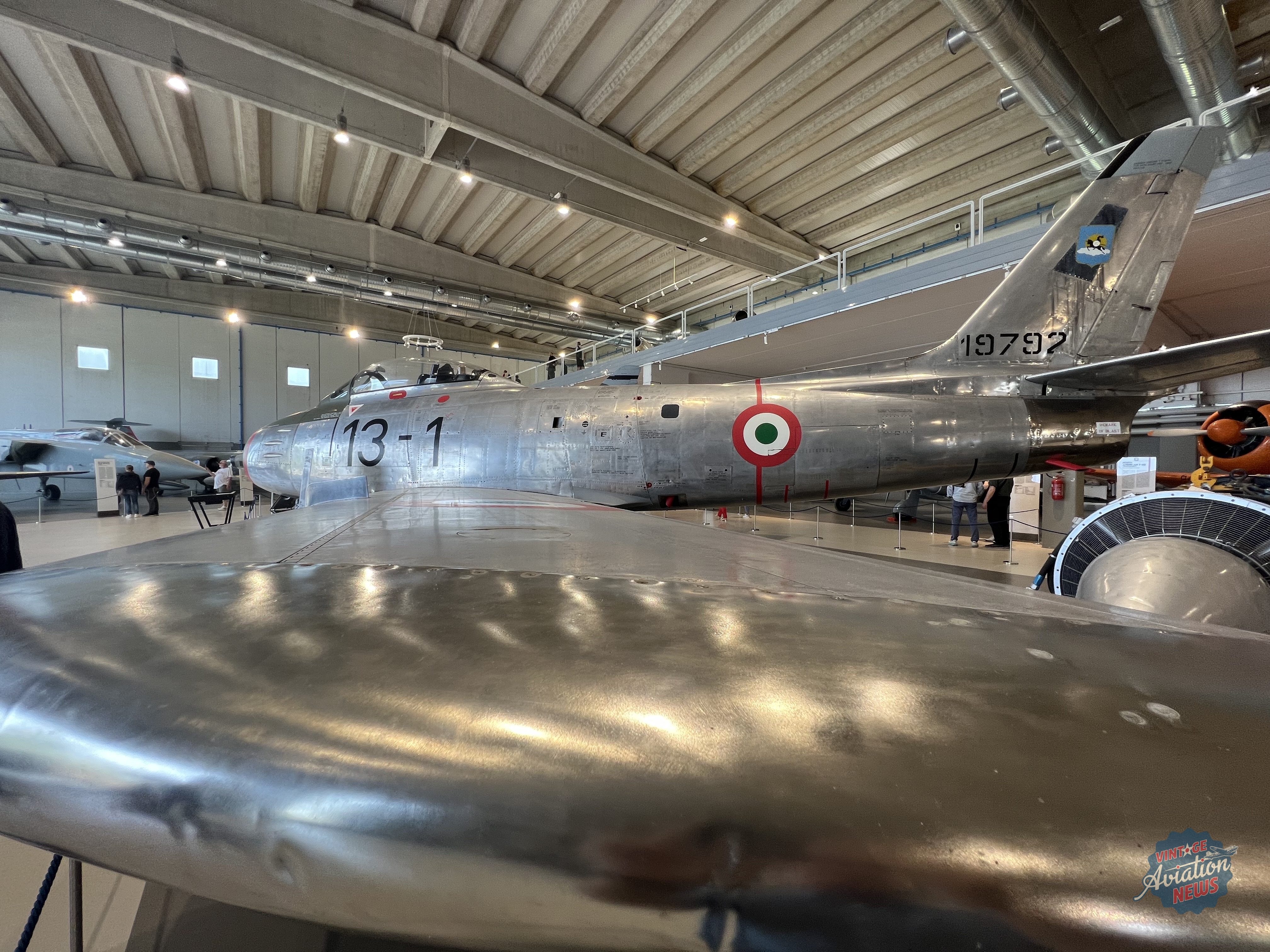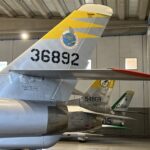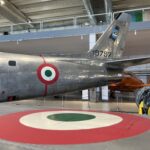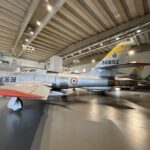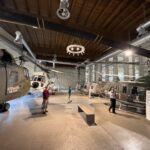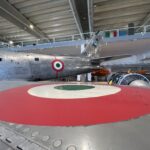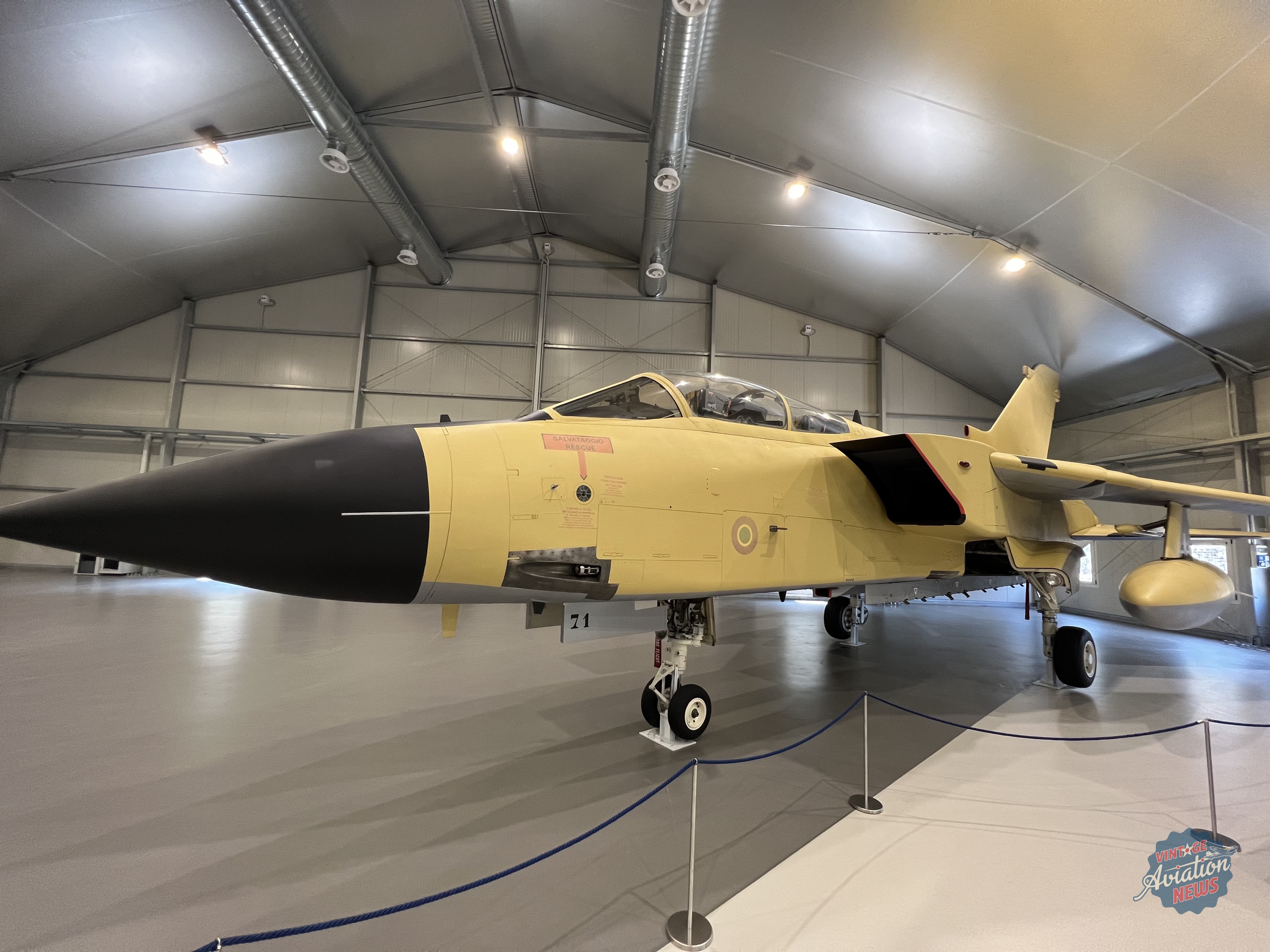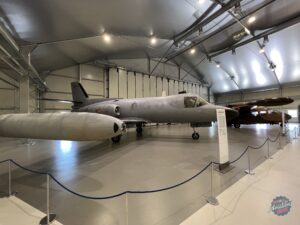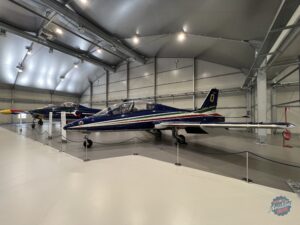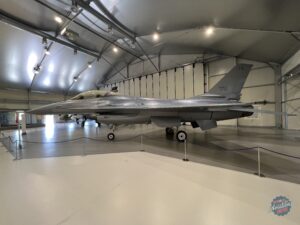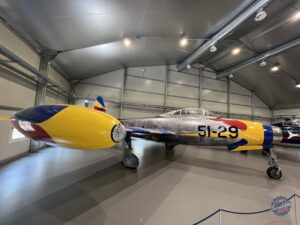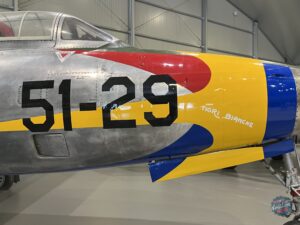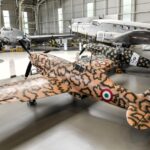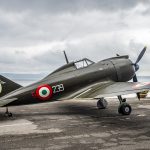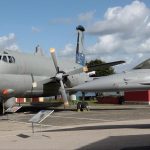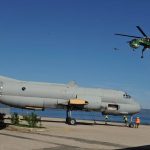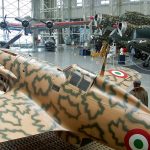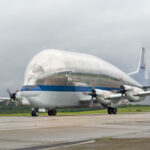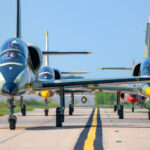by Moreno Aguiari
As we reported, the Museo Storico Aeronautica Militare (MUSAM) – the Italian Air Force History Museum – was officially inaugurated on May 4th, 2023 following an intense, 18-month renovation and redevelopment project leading towards the Aeronautica Militare’s centenary celebrations. However, due to permits and authorizations required, it didn’t open to the public until June 16th. Situated at a historically relevant and picturesque site on the shores of Lake Bracciano, in Vigna di Valle, there could be no more beautiful setting for this magnificent collection of Italian aviation artifacts. In our previous article, we discussed the new buildings and overall improvements at MUSAM, but we finally had the chance to visit the museum in person during our recent trip to Italy.
The Deputy Chief of Staff of the Italian Air Force, General Aurelio Colagrande, facilitated a private visit to MUSAM, accompanying us on our tour. Amongst his many responsibilities, General Colagrande is in charge of the Italian Air Force’s historical offices, including the museum. Describing the recent efforts he oversaw which both reimagined and expanded MUSAM, General Colagrande noted: “We are extremely proud of the work accomplished. We feel that aviation enthusiasts will appreciate the improvements and layout of the collection. We still have to apply a few tweaks, but the overall result is already impressive.”
I last visited MUSAM as a young man in 1991. So much has changed in the interim, that this visit was essentially like seeing the place for the first time. For this occasion, I wanted to take as detached and impartial an approach as I felt possible. My overall impression is extremely positive, however, there is still plenty of room for improvement… so let me explain.
The museum is located by the shores of Lake Bracciano which helps create a very pleasant overall mood and ambiance, however, its geographical location and layout present some challenges as well. Reaching the museum from Rome via public transportation is extremely complicated presently, meaning that the only practical option is to travel by car. However, once you arrive, the available parking is exceedingly limited. General Colagrande revealed that the Air Force had considered relocating the museum but, after cost analysis and studying the logistic challenges involved, that idea was shelved. A shuttle to/from Bracciano train station would definitely help those tourists who will want to reach the museum without a car.
Despite the difficulties involved in getting to the museum, once there, it has to be said that the new buildings and collection layout were clearly well thought out. The airplanes are properly spaced and lit by natural light (thanks to the big hangar doors). The new LED lighting system also provides perfect illumination where natural light is insufficient. Each airplane is accompanied by a descriptive sign in both Italian and English, although it also included a simple QR code linked to additional information about the artifact accessible via a cellphone or tablet. Personally, I would also like to see more historical photos and graphics on the walls supporting the overall story of the museum and the airplanes.
The museum’s new sections are supported by well-conceived and stylish architecture, accompanied by flatscreen displays screening well-produced, historical videos. I definitely would like to see these screens throughout all of the museum’s hangars. A special mention must go to MUSAM’s newly-built cafe, which offers an incredible view of the Macchi seaplanes – definitely one of the coolest settings I have seen in museums across the world.
Thanks to the additional buildings, the collection is now presented in a far more thoughtful and coherent manner than before. Visitors will be stunned by an amazing artifact as soon as they walk through the main entrance, thanks to the new exhibit dedicated to the Garnerin Balloon – the world’s oldest surviving aviation relic, which dates back to the dawn of the nineteenth century.
On December 2nd, 1804, Napoleon Bonaparte crowned himself Emperor of France at Notre Dame Cathedral. One of the highlights from that day involved the flight of a spectacular, hydrogen-filled balloon, designed by the Official Aeronaut, André-Jacques Garnerin. The balloon envelope, made of silk and waxed cotton, was contained within a raw silk net, decorated with more than 3,000 small glass lamps. A large sculpture of an imperial eagle hung below the balloon, shaped like an imperial crown. The balloon also carried the manufacturer’s identification card along with a prize of three hundred Francs for whoever found it. Following its launch during the evening of December 16th, a strong wind extinguished the lamps and also set the balloon adrift which, after twenty-two hours and nearly 1,400 kilometers of flight, landed at the gates of Rome in Italy. It struck a monument on the Via Cassia (then, mistakenly, believed to be the Roman Emperor Nero’s tomb). The impact detached the heavy imperial eagle, lightening the balloon, which regained some altitude to then end its flight in the waters of Lake Bracciano. A local fisherman retrieved its deflated envelope, which, since it fell in papal territory, became the property of the Vatican. It remained under Vatican ownership for over 170 years. But on July 22nd, 1978, Pope Paul VI (the first pontiff in history to fly on an Italian Air Force aircraft), donated it to the Museum as a token of his gratitude. In 2023, on the occasion of the Centennial of the Italian Air Force, the balloon was carefully restored, to preserve this exceptional relic for many more years to come.
The Troster Hangar
The Troster, the first pavilion on the itinerary, is MUSAM’s oldest hangar. Made in Austria just after World War I, Italy received it as part of its war reparations package. Rectangular in shape, with an area of 1,100 square meters and a height of 12 meters, it is made of a metal lattice structure. Originally, there were two Troster hangars at Vigna di Valle, placed side by side and covered with wooden boards. Construction began in 1925, but by 1929 a camouflage-painted, sheet metal roof had replaced the earlier wooden covering. A concrete ramp was built on the lake shore in front of this hangar to allow seaplanes to transit to and from the water. The western-most Troster hangar ended up being demolished in 1970 to make space for the construction of the Velo Hangar. The remaining hangar underwent a radical renovation during the 1990s; sliding metal access portals were added which could be opened on the lakeside. The pavilion now houses displays with artifacts that date from the earliest aviation pioneers up until the end of World War I. Along with the hydroplane, that is, the prototype of the hydrofoil, several World War I aircraft are on display. There are four thematic areas, ranging from the establishment of the Vigna di Valle air base to the history of flying aces. The pavilion hosts only original aircraft, including the Bleriot XI-2, two combat veteran SPAD S VII, a Caproni CA-36, Ansaldo SV 5, the Hydroplane Crocco- Ricaldoni, the Macchi Hanriot HD1 that belonged to the ace Flavio Torello Baracchini (credited with 21 confirmed and nine unconfirmed aerial victories in only 6 months of WWI). Finally, the Troster hangar collection includes two Austro-Hungarian spoils of war: the only surviving examples of both the Lohner L.127 seaplane and Junkers J4 (fuselage only). The latter is considered to be the first armored aircraft in history.
The Velo Hangar
The Velo Hangar, the Museum’s second pavilion, is named after the company which built it (between 1976 and 1977) to connect the Troster and Badoni Hangars. It consists of two parts; the first being a single-story airplane hangar, while the second (on two floors) accommodates the lobby, cafeteria, restrooms, offices and conference room. Made of prefabricated concrete elements, it spans an area of about 2,500 square meters. The collection of the Velo Hangar describes the golden age of Italian aviation between 1919 and 1939 which saw the rise and development of the Regia Aeronautica (Italian Royal Air Force). The itinerary recounts the polar flights of General Umberto Nobile, the great mass cruises promoted by Italo Balbo, the Schneider Trophy and other prizes awarded by Italian aviators, their war campaigns in Ethiopia, and the Spanish Civil War.
The “star” of this pavilion is, without doubt, the Macchi MC.72. Designed by the engineer Mario Castoldi, the Macchi MC.72 represented the ultimate expression of aeronautical engineering technology of the time. This sleek racing seaplane was powered by a modified Fiat AS.6 engine, made from two AS.5s connected to two counter-rotating propellers; it was capable of generating more than 3,000 horsepower. The cooling system consisted of radiating surfaces distributed over most of the airframe. Conceived for the 1931 edition of the Schneider Trophy, it was finished too late to compete in the race. Despite its hazardous track record, involving two fatal accidents in 1931, the MC.72 continued to fly with the Reparto Alta Velocita’ (High-Speed Department) as a record-breaking aircraft. Indeed, it achieved a number of world absolute speed records, including 709.202 kilometers per hour in 1934 (with Marshal Francesco Agello at the controls). Despite other aircraft exceeding this speed subsequently, it remains noteworthy as it has yet to be beaten for the piston-engined seaplane category! The aircraft on display is none other than the 1934 record holder.
The Badoni Hangar
Built in 1930 by the Badoni company, this 60m x 60m metal hangar provided shelter and maintenance space for large seaplanes. The building still retains some vestiges of its original use. For instance, under the flooring, there are two platforms for balancing and centering aircraft. Furthermore, three deck girders supported manual chain hoists for lifting machinery and engines. And outside the main doors, there are two connections for the fuel pumps, fed by an underground pipeline, which allowed the refueling of seaplanes. These were moved by trolleys on tracks, still partially visible, which allowed them to be moved towards the water ramp or the crane (which still exists today) used for storage in the water. A long gallery built in the 1990s leads to the Skema Hangar. The hangar showcases memorabilia from the 1930s through the end of World War II and the early post-war period. There are aircraft that operated between 1935 and 1949, including Italy’s main fighters (Reggiane Re.2000 and Re.2002, Series 2 fighters such as MC.200 -202 -205, Fiat G.55) and Allied planes (P-51 Mustang) used by the Italian Royal Air Force during the Co-Belligerency Period (Supermarine Spitfire), and later by the Italian Air Force. Also present are the large, three-engined transports and bombers which Italy made famous (SIAI SM.82, SIAI SM.79, CANT Z.506, FIAT G-212) as well as other observation and liaison aircraft. In addition, there are experimental weapons and model airplanes on the balcony. Also worth mentioning is the wreck of a Reggiane Re.2000 recovered from the sea off the coast of La Spezia in late 2013.
The Skema Hangar
Hangar 100
With its precious and unique artifacts, a stunning setting – and now a modern exhibition approach – MUSAM is definitely a “must-see” for aviation enthusiasts from around the world. My gratitude goes to General Aurelio Colagrande who facilitated the visit, and for the excellent work he oversaw in redesigning such an iconic facility for Italian aviation history.







